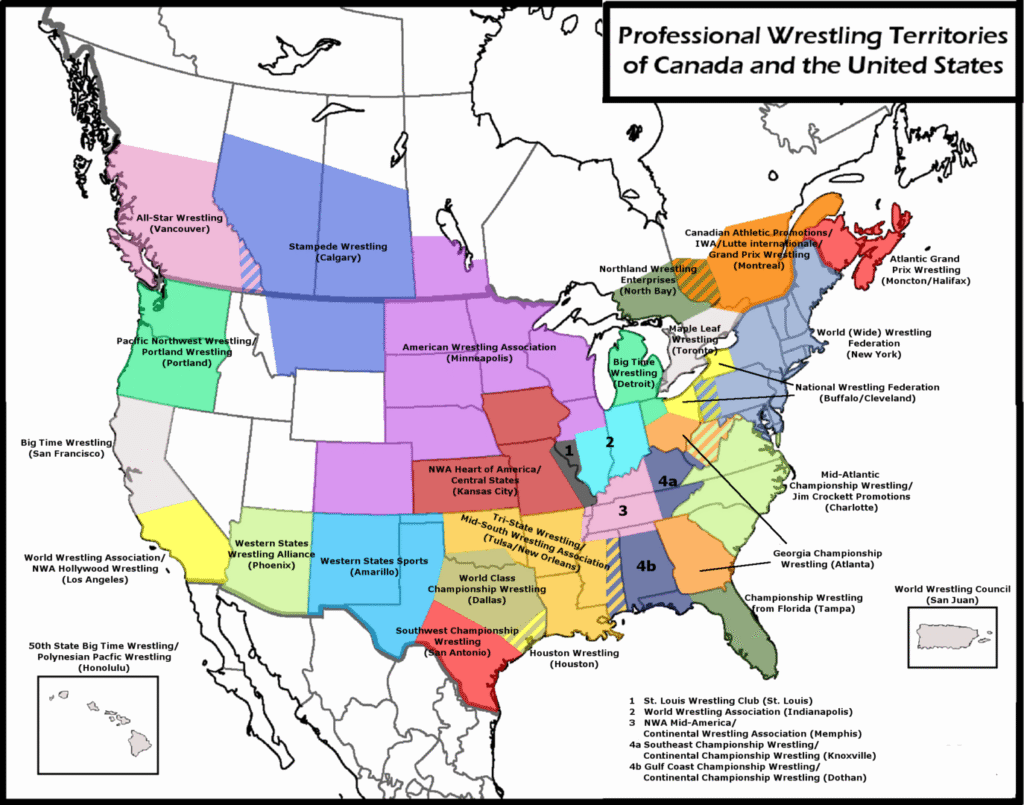WWE Didn’t Just Build a Brand. They Built a Legacy.
WWE is more than just a wrestling company. It’s a brand machine.
For over 40 years, WWE has dominated the entertainment industry—not because they had the best athletes, but because they understood one thing better than most: brand positioning.
In this post, we’ll break down how WWE built an unstoppable brand and what you, as a small business owner or content creator, can take from their playbook.
From Territories to Takeover: WWE’s Disruption Era

Before WWE became WWE, wrestling was regional.
Dozens of promotions operated under the National Wrestling Alliance (NWA), each with its own stars, rules, and TV deals.
But in 1982, that all changed.
Vincent K. McMahon bought the WWF from his father and immediately went against the status quo.
“He probably would’ve said, ‘Vinny, what are you doing? You’re gonna wind up at the bottom of a river.’”
Vince had a different vision: national TV. Mainstream media. And entertainment over athletic competition.
The Birth of “Sports Entertainment”
Vince knew that to reach a wider audience (and attract advertisers), he needed to reposition the product entirely.
So he coined the term sports entertainment.
Not just wrestling.
Not just sports.
A blend of athleticism + storytelling + character-driven drama.
This rebrand allowed WWE to:
✔ Differentiate from other wrestling promotions
✔ Avoid the regulations of real sports
✔ Build a category of one
Lesson for entrepreneurs: If you can’t beat the competition, create your own lane.
Era by Era: WWE’s Brand Pivots (Planned & Unplanned)
Here’s the truth: WWE didn’t always plan their rebrands.
Most of them were reactions—to cultural shifts, controversies, or competitor threats.
Here’s a breakdown of WWE’s major eras—and the branding lessons behind each:

Key takeaway: Branding is not one decision. It’s a series of adjustments—with purpose.
WWE Characters Are Brand Archetypes
Let’s talk about what really keeps fans loyal: characters.
WWE doesn’t just sell matches. They sell emotion.
Here are some iconic examples:
- Stone Cold Steve Austin = rebellion
- The Undertaker = mystique & legacy
- John Cena = heroic determination (and overexposure 😅)
- Roman Reigns = power, family, betrayal
- Becky Lynch = reinvention & grit
These characters represent more than just storylines. They reflect core brand values.
And WWE reinforces those values across:
- Merchandising
- Video packages
- Catchphrases
- Consistent weekly storytelling
Lesson for you: Your brand needs a clear personality. Not just content—but connection.
Three Brand Lessons From WWE You Can Use Today
Let’s bring it all together.
Here are 3 major lessons small business owners can take from WWE’s branding strategy:
Own Your Lane
WWE didn’t just compete with wrestling promotions.
They redefined the category.
Ask yourself: What do you offer that nobody else does—and how are you framing it?
Pivot With Purpose
WWE didn’t always get it right.
But they always adjusted—based on timing, pressure, and audience response.
Ask yourself: Are you evolving strategically… or clinging to what used to work?
Lead With Story, Not Product
Characters. Emotion. Payoffs.
That’s what WWE sells—and it’s why people stay loyal.
Ask yourself: What’s my audience rooting for?
Want Help Positioning Your Brand Like WWE?
Whether you’re just getting started or ready to evolve your message—I can help you find your lane, clarify your strategy, and build a brand people care about.
🧠 Positioning
📚 Storytelling
🎯 Long-term growth strategy
Let’s get to work: 👉 empower2create.com/services
Written by Triston Gillon
Founder of Empower 2 Create | Brand Positioning & Content Strategy for Small Business Owners
